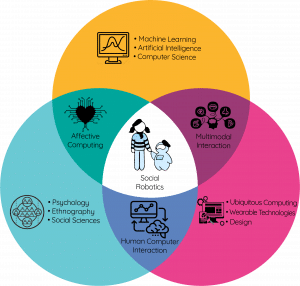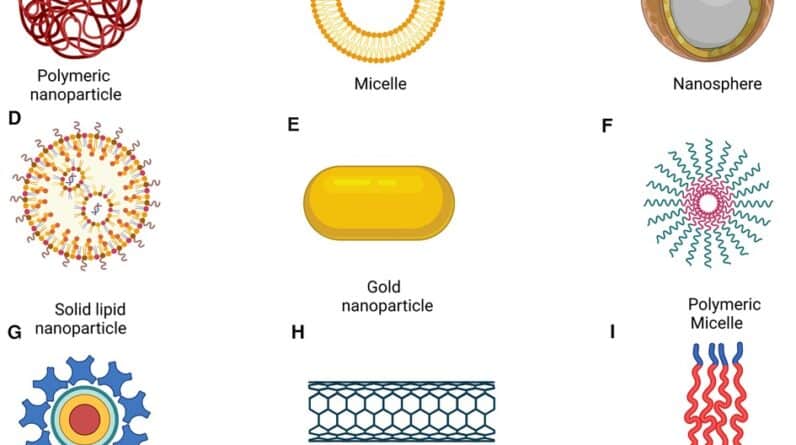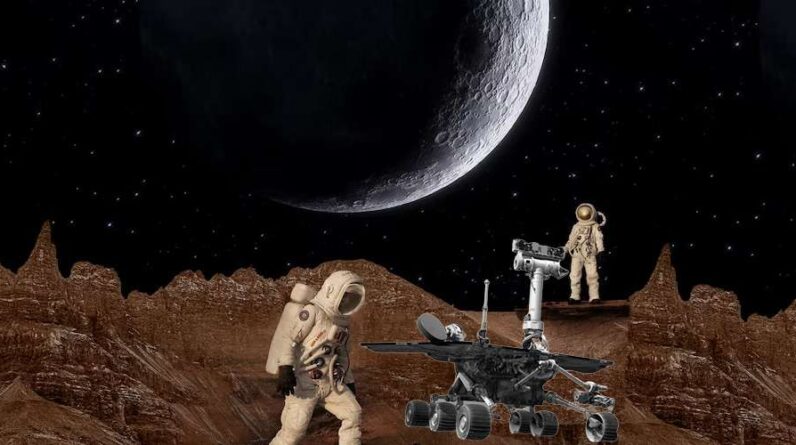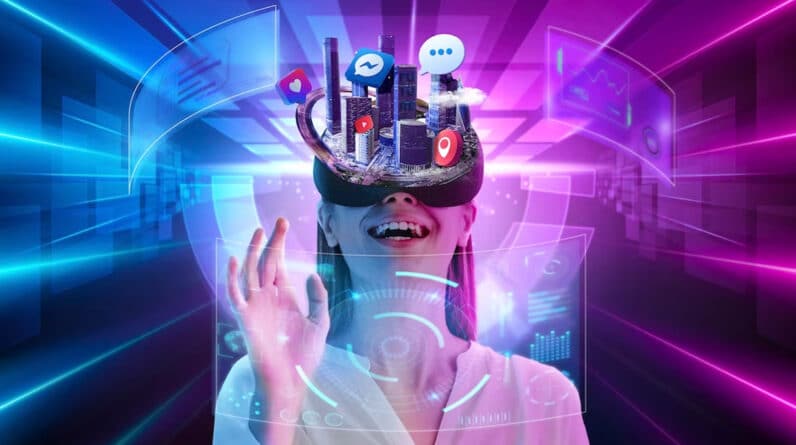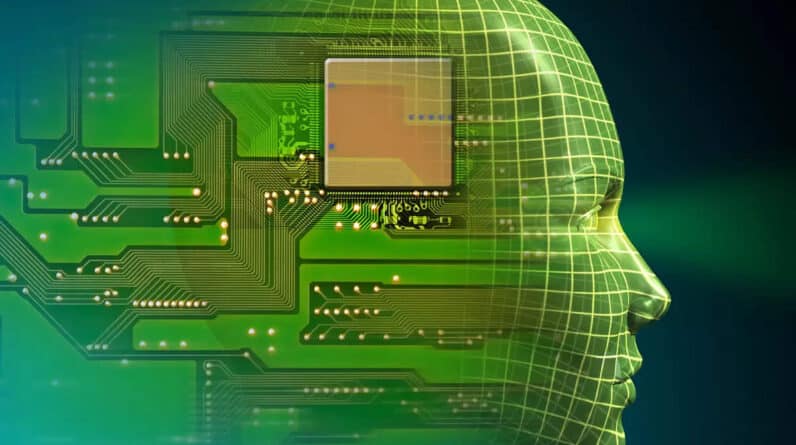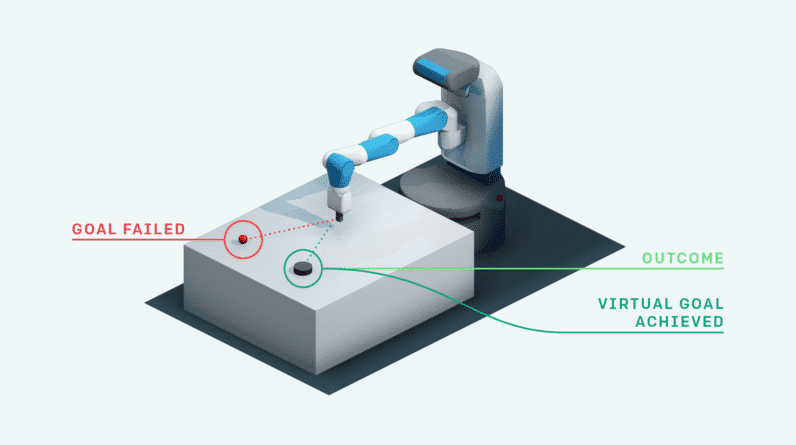In this article, we will explore the fascinating intersection of AI and creativity, where cutting-edge technology meets the realm of art, music, and writing. Discover how artificial intelligence has become an unprecedented tool that not only aids artists, musicians, and writers but also blurs the lines between man and machine. Dive into the captivating world where AI-generated paintings, compositions, and even novels challenge our traditional notions of creativity and raise thought-provoking questions about the future of artistic expression. Get ready to be amazed as we navigate this captivating landscape of innovation and imagination.

Defining AI in Creativity
Understanding artificial intelligence
Artificial intelligence (AI) is a branch of computer science that aims to create intelligent machines capable of performing tasks that would typically require human intelligence. AI systems are designed to learn from data, recognize patterns, make decisions, and solve problems. In the context of creativity, AI algorithms and models are trained to generate artistic, musical, and written content that exhibits creativity and originality.
Exploring AI in creative industries
The creative industries, including art, music, and writing, have been increasingly embracing AI as a tool for enhancing creative processes. AI algorithms can analyze vast amounts of data, identify trends, and generate new ideas or content based on these insights. This technology offers artists, musicians, and writers new avenues for exploration, inspiration, and collaboration.
AI as a tool for enhancing creativity
AI has the potential to enhance creativity by providing artists, musicians, and writers with tools and resources that can augment their creative processes. Whether it’s generating new ideas, providing assistance in the creative process, or pushing boundaries in artistic expression, AI can serve as a catalyst for innovation and exploration. By leveraging AI technologies, creatives can unlock new possibilities and discover novel ways of expressing their artistic visions.
AI in Art
AI-generated art: An overview
AI-generated art refers to artwork that has been created with the assistance or complete involvement of an AI system. These systems can generate visual art, sculptures, or even interactive installations. Artists can input specific parameters, such as desired style or mood, and AI algorithms can analyze existing art and generate new pieces based on these inputs. This method allows artists to explore new artistic territories and push the boundaries of traditional artistic mediums.
Advantages and limitations of AI-generated art
One of the main advantages of AI-generated art is its ability to produce a vast amount of diverse and unique artworks quickly. AI algorithms can analyze and process large datasets, enabling artists to gain inspiration and explore different artistic styles. Additionally, AI-generated art can challenge traditional notions of authorship and originality, raising intriguing questions about the role of creativity in the modern era.
However, there are limitations to AI-generated art. Critics argue that AI lacks the emotional and intuitive aspects that human artists bring to their work. While AI-generated art can create visually stunning pieces, it may lack the depth and emotional resonance that comes from the human experience. Moreover, the indiscriminate use of AI in art raises concerns regarding the loss of human expression and creativity.
The impact of AI on traditional art forms
AI’s impact on traditional art forms is a topic of much discussion and debate. Some argue that AI threatens the livelihoods of traditional artists, as AI-generated art becomes more sophisticated and widely accepted. However, others believe that AI can complement traditional art forms by offering new tools and techniques that artists can incorporate into their work. By viewing AI as a collaborator rather than a competitor, traditional artists can embrace the possibilities that AI presents and leverage its capabilities to enhance their craft.
Ethical considerations in AI-generated art
The rise of AI-generated art also raises ethical considerations. One major concern is the issue of ownership and authorship. As AI algorithms generate art, questions arise regarding who owns the rights to the artwork. Additionally, the potential for bias in AI algorithms can perpetuate societal inequalities or reinforce dominant artistic styles. It is crucial for artists, policymakers, and technology developers to address these ethical considerations and ensure transparency, fairness, and accountability in the realm of AI-generated art.

AI in Music
AI-composed music: A brief history
AI’s involvement in music composition dates back several decades. Early experiments with AI systems attempted to generate music by utilizing rule-based algorithms. However, advancements in machine learning and deep learning have led to the development of more sophisticated AI models capable of composing music that closely resembles human compositions. AI-composed music now spans various genres and styles, demonstrating the potential of AI to revolutionize the music industry.
The role of AI in music production
AI plays a significant role in music production, assisting musicians, producers, and sound engineers in various ways. AI algorithms can analyze musical data, identify patterns, and generate new musical ideas or arrangements. Additionally, AI-powered tools can enhance the sound engineering process by automatically adjusting audio levels, optimizing the mix, or suggesting creative effects. These advancements enable musicians to streamline their workflows, experiment with new sounds, and explore innovative musical directions.
The evolution of music with AI
The integration of AI into music composition and production has led to the evolution of musical styles and genres. By analyzing vast amounts of musical data, AI algorithms can identify trends and patterns that humans may not readily recognize. As a result, AI-generated music can blend different genres, create unique fusions, and even pioneer entirely new musical styles. This evolution challenges traditional notions of musical creativity and opens doors for boundary-pushing innovation.
The debate around AI-generated music
The emergence of AI-generated music has sparked a debate within the music industry and among musicians. Some view AI-generated music as a threat to the authenticity and human connection that music embodies. They argue that music should remain an exclusively human endeavor, driven by human experiences and emotions. However, proponents of AI-generated music believe that it expands the creative landscape and offers new possibilities for collaboration and artistic expression. The debate surrounding AI-generated music highlights the importance of recognizing the complementary relationship between human creativity and AI assistance.
AI in Writing
AI-powered writing assistance tools
AI-powered writing assistance tools have become increasingly prevalent, aiding writers in various aspects of the writing process. These tools can provide suggestions for grammar and spelling corrections, offer stylistic advice, and even generate automatic writing prompts. By utilizing natural language processing and machine learning techniques, AI-powered writing tools enhance the efficiency and quality of the writing experience.
Automated content generation with AI
AI algorithms have also been developed to automate the generation of written content. News articles, product descriptions, and even creative writing can be automatically generated using AI models. These systems can analyze vast amounts of data, understand context, and generate coherent text that mimics human writing. While AI-generated content can provide efficiency and scale, it raises concerns regarding the authenticity and originality of written works.
AI and the future of storytelling
AI’s impact on storytelling is an area of growing interest. AI algorithms can analyze vast amounts of storytelling data, identifying narrative patterns, and plot structures. This analysis provides writers with insights and inspiration for creating compelling stories. Moreover, AI-powered interactive storytelling tools can engage readers by adapting the narrative based on their preferences and choices. The integration of AI in storytelling has the potential to enhance audience engagement and create immersive narrative experiences.
Challenges and controversies in AI writing
The use of AI in writing also presents challenges and controversies. One primary concern is the potential for AI to amplify biases present in training data, perpetuating existing societal inequalities or promoting misinformation. Ensuring that AI writing systems are unbiased and accurate requires careful curation of training data and continuous monitoring. Additionally, the authenticity and originality of AI-generated writing raise questions about the role of human creativity and the ethics of using AI as a tool for writing.

Collaboration between AI and Creatives
AI as a co-creator in the creative process
AI has the potential to serve as a co-creator in the creative process, working alongside human artists, musicians, and writers. By leveraging AI algorithms and models, creatives can collaborate with AI systems to generate new ideas, explore unconventional approaches, and push the boundaries of their respective art forms. The partnership between AI and creatives can fuel innovation, facilitate experimentation, and result in novel and inspiring works of art.
The potential for human-AI collaboration
Human-AI collaboration offers unique possibilities for creative expression. By combining the strengths of human creativity and AI’s analytical and generative capabilities, artists, musicians, and writers can achieve a symbiotic relationship where AI enhances human creativity, efficiency, and exploration. This collaboration allows for the development of new artistic techniques, the discovery of unexplored creative pathways, and the creation of truly groundbreaking works.
Exploring interdisciplinary collaborations
AI’s impact on creativity extends beyond individual art forms. Interdisciplinary collaborations between artists, musicians, writers, and AI experts can lead to the development of innovative projects that transcend traditional boundaries. For example, AI-generated music can inspire visual art, and AI-driven storytelling can merge with interactive installations. These collaborations foster multidisciplinary creativity and pave the way for new artistic expressions that blend diverse mediums and perspectives.
Unlocking Creativity with AI
AI-based creative prompts and inspiration
AI can serve as a valuable source of creative prompts and inspiration. By analyzing vast amounts of data, AI algorithms can generate ideas, suggest unique combinations, or recognize patterns that human creators may not readily perceive. AI-generated prompts can provide artists, musicians, and writers with new starting points and spark innovative concepts that may have otherwise remained undiscovered.
Enhancing creative problem-solving with AI
AI’s analytical capabilities can enhance creative problem-solving processes. In various creative fields, artists, musicians, and writers encounter challenges that require innovative solutions. AI algorithms can analyze problem domains, identify potential solutions, and assist in overcoming creative roadblocks. By leveraging AI in problem-solving, creatives can expand their problem-solving toolkit and uncover alternative approaches to artistic challenges.
AI as a catalyst for new creative pathways
AI’s ability to generate novel ideas or combinations can act as a catalyst for new creative pathways. By exposing artists, musicians, and writers to AI-generated content, they can explore uncharted territories and break free from creative constraints. AI can inspire new techniques, challenge conventional artistic norms, and encourage artists to experiment with different mediums, styles, or genres. The synergy between AI and human creativity can lead to exciting artistic breakthroughs and the emergence of entirely new creative frontiers.

Embracing AI as an Artist, Musician, or Writer
The role of AI in the creative journey
As an artist, musician, or writer, embracing AI can enrich your creative journey. AI tools and technologies can serve as valuable resources and collaborators throughout the creative process. From generating ideas to refining artistic expressions, AI can enhance your creative output and open doors to new possibilities. By adopting AI as an integral part of your creative journey, you can harness its potential to innovate, inspire, and expand your artistic horizons.
Balancing human creativity and AI assistance
While AI offers valuable assistance, it is essential to strike a balance between human creativity and AI involvement in the creative process. Human experiences, emotions, and perspectives are vital components of artistic expression. By maintaining a symbiotic relationship with AI, you can leverage its strengths while infusing your work with the unique qualities that only human creativity can provide. Finding the right equilibrium between human and AI contributions ensures that your art maintains its authenticity and resonates with audiences on a deeper level.
Embracing AI tools for creative exploration
Embracing AI tools for creative exploration allows you to venture into unexplored creative territories. AI can inspire you, challenge your artistic boundaries, and provide a fresh perspective on your work. Whether you are an artist experimenting with AI-generated visuals, a musician exploring AI-assisted composition, or a writer utilizing AI writing assistance tools, embracing AI can breathe new life into your creative process. By embracing AI tools, you can tap into the vast potential of this technology and discover new dimensions of your artistic voice.
The Future of AI and Creativity
Predicting the advancements in AI and creativity
The future of AI and creativity holds immense possibilities. Advances in AI algorithms, machine learning techniques, and computing power will continue to shape and redefine creative industries. As AI models become more advanced, they are likely to exhibit increased creativity, adaptability, and even emotional intelligence. These advancements will enable AI systems to generate increasingly complex and sophisticated artistic, musical, and written content.
Implications for the future of art, music, and writing
The integration of AI into art, music, and writing will revolutionize these creative domains. AI-generated art may challenge traditional notions of artistic authorship and originality, propelling artists to explore new forms of creativity. In music, AI has the potential to create entirely new genres, styles, and musical experiences. AI-powered writing tools will enhance the efficiency and quality of written works, while AI-generated content may reshape the publishing and media landscape.
The societal impact of AI in creative industries
AI’s impact on creative industries extends beyond the realm of artistic expression. The widespread adoption of AI in these domains will have societal implications, influencing how we perceive, consume, and interact with art, music, and written content. The democratization of creativity through AI may make art more accessible and foster cultural exchange on a global scale. However, it is crucial to address concerns regarding ethical implications, biases, and the preservation of human creativity and craftmanship.

Ethical Considerations of AI in Creativity
Ownership and authorship in AI-generated content
One significant ethical consideration in AI-generated content is determining ownership and authorship. As AI algorithms play a significant role in generating creative works, questions arise regarding who owns the rights to these creations. The interplay between human input and AI assistance complicates the issue, as it challenges traditional notions of authorship. Resolving these questions of ownership is crucial to ensure fair compensation and recognition for artists, musicians, and writers involved in the creative process.
Unintended biases and ethical implications
AI algorithms can inadvertently perpetuate biases present in training data, leading to ethical concerns. If AI-generated content reflects existing societal inequalities or promotes discriminatory views, it can further amplify these biases on a broader scale. Developers and creators must prioritize diversity and inclusivity in training data, continuously monitor and mitigate biases, and ensure AI-generated content aligns with ethical standards.
Ensuring transparency and accountability
Transparency and accountability are vital in the development and implementation of AI technologies in creative industries. Both creators and consumers of AI-generated content should be informed about its origins and the role of AI algorithms in the creative process. Transparent documentation of AI systems and ethical guidelines can facilitate accountability and empower stakeholders to make informed decisions regarding the use and consumption of AI-generated content.
Conclusion
The intersection of AI and creativity has the potential to revolutionize art, music, and writing. AI-generated content offers new avenues for creative exploration, inspiration, and collaboration. By embracing AI as a valuable tool and collaborator, artists, musicians, and writers can unlock new creative pathways and push the boundaries of their respective art forms. However, ethical considerations must be addressed to ensure fairness, diversity, and transparency in the realm of AI-generated content. As AI advances, the future of creativity holds exciting possibilities, shaping the way we perceive and engage with artistic expressions. It is up to creators, technologists, and policymakers to navigate the integration of AI into creativity responsibly and ensure that human creativity remains at the core of these industries.

